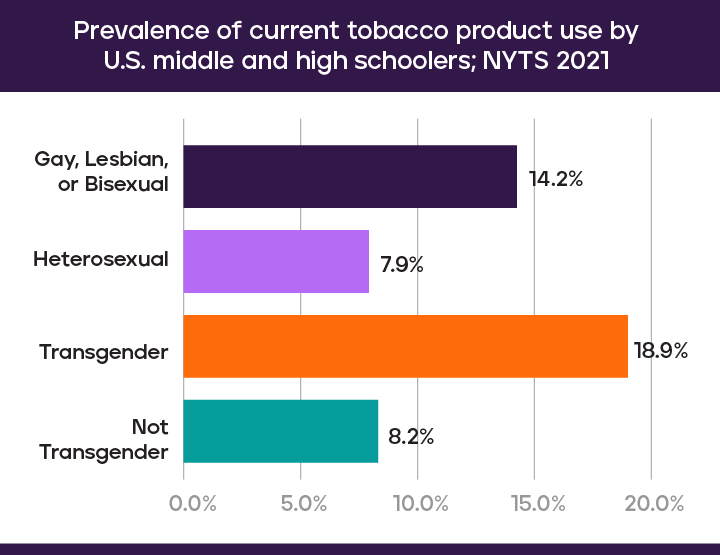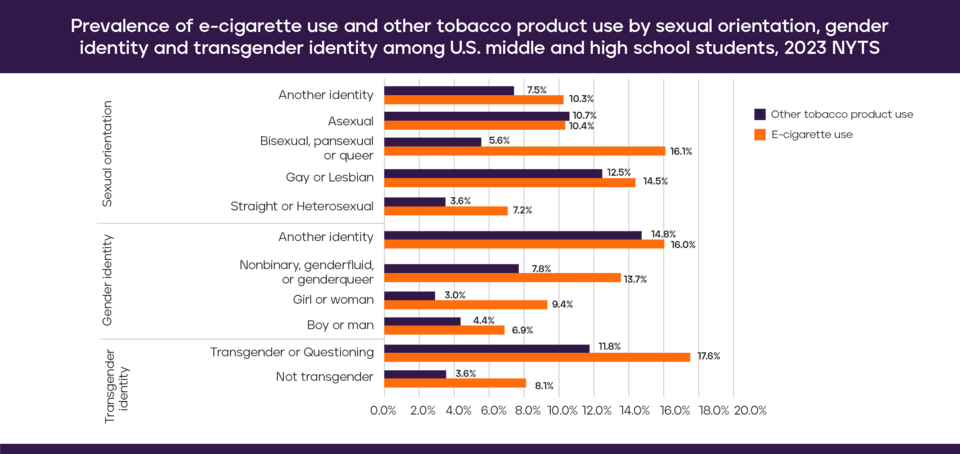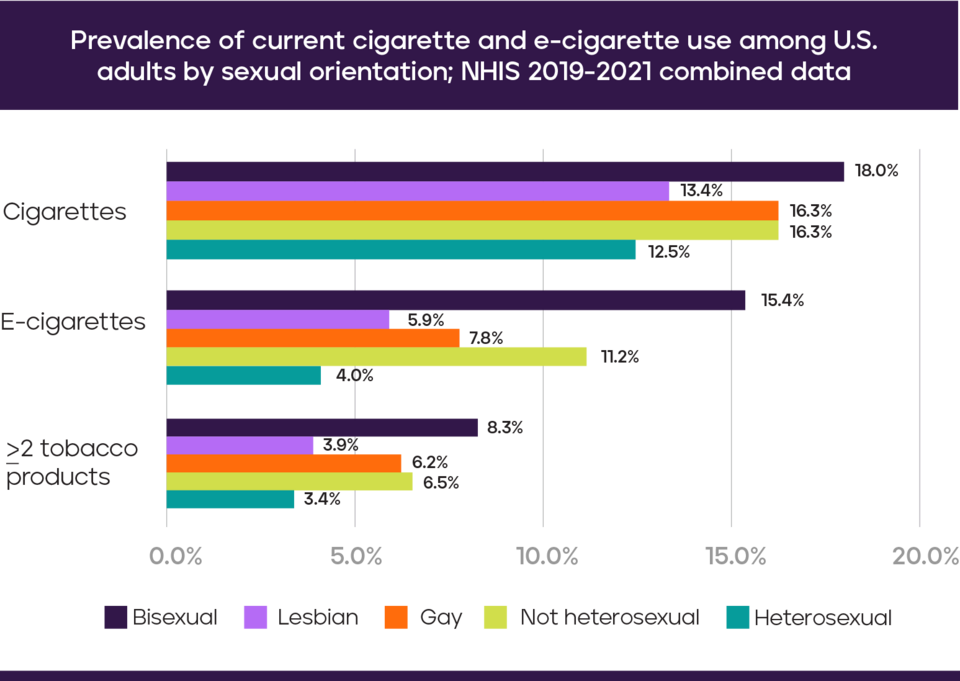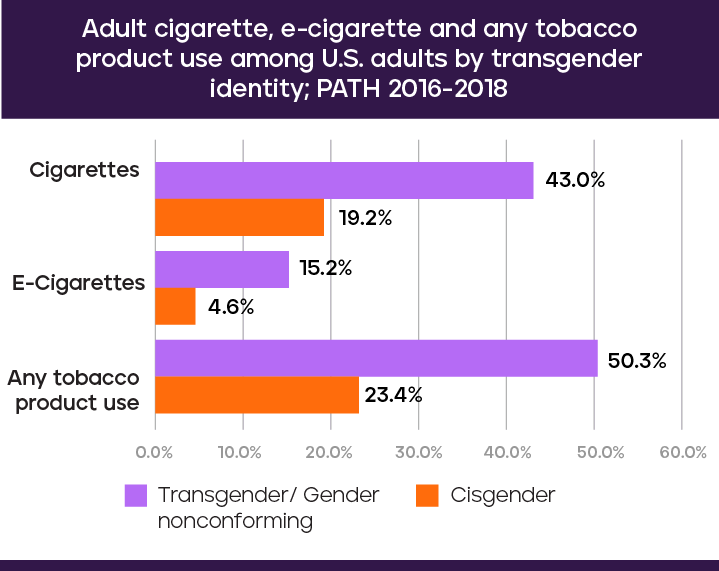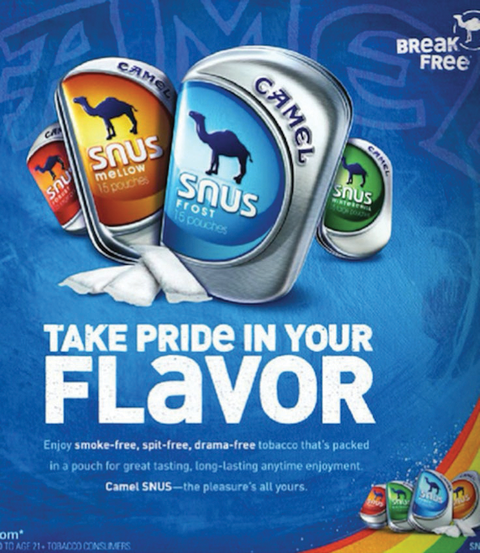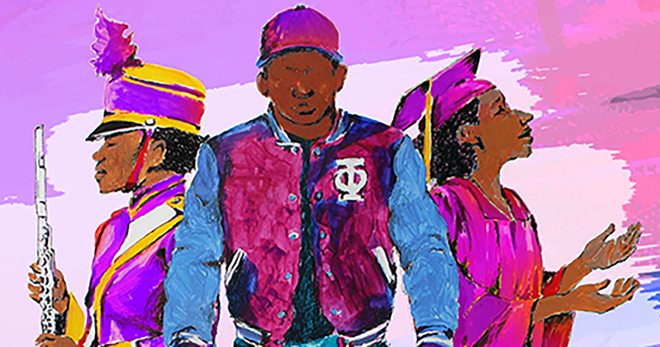Tobacco Use in the LGBTQ+ Community
The LGBTQ+ community experiences social stigma and discriminatory treatment at disparately high rates. The tobacco industry has historically targeted communities that experience higher stress – contributing to disproportionately high tobacco use rates in the LGBTQ+ community.
Lesbian, gay and bisexual (LGB) adults smoke cigarettes at rates significantly higher than straight adults and were nearly twice as likely to use e-cigarettes – trends due in part to targeted marketing by Big Tobacco. Transgender and gender diverse adults have 2x the prevalence of tobacco products use than their cisgender peers. For years, the tobacco industry has made efforts to appeal to LGBTQ+ consumers through targeted advertisements in LGBTQ+ press, through cigarette giveaways, free tobacco industry merchandise, and more. Today, the LGBTQ+ community is among the hardest hit by tobacco.
Note: Terminology in this document varies and is based on the studies cited. Truth Initiative recognizes that some of these terms are no longer preferred in the LGBTQ+ community.
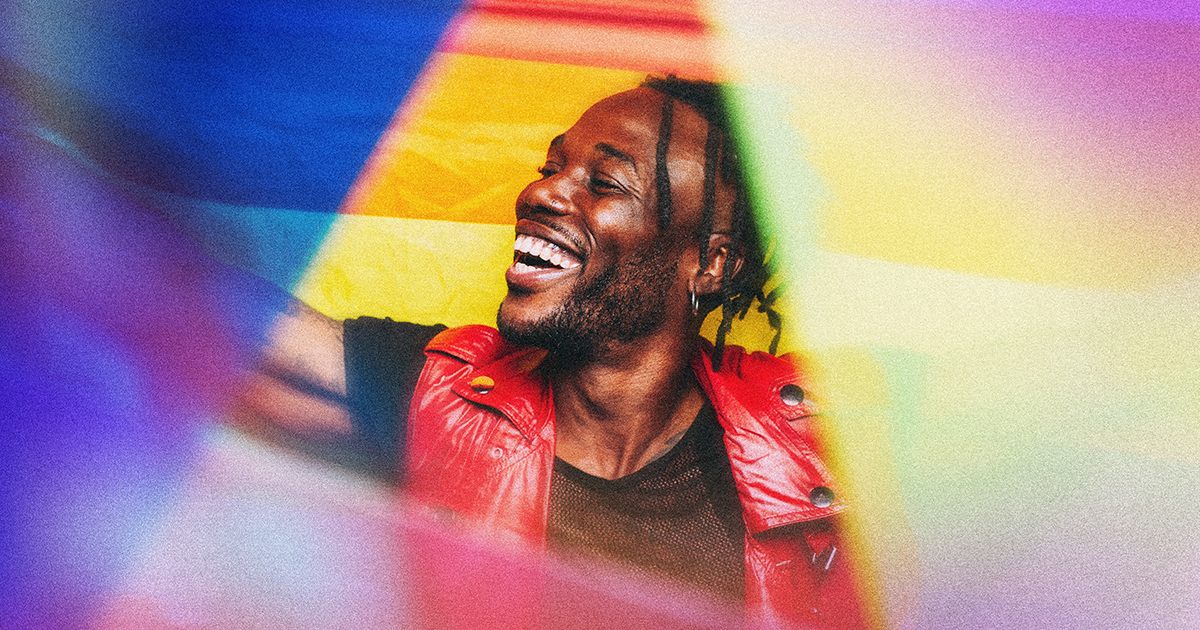
Tobacco Use Rates in the LGBTQ+ Community
Research documenting health disparities among LGBTQ+ individuals is growing, but there are still limited national data available regarding tobacco use among the LGBTQ+ community. However, the data that are available undoubtedly indicate that the LGBTQ+ community is disproportionately impacted by tobacco.
Tobacco use trends among sexual minority youth
- LGB youth are more likely to use tobacco than their straight peers. Data from 2021 show that 14.2% of LGB youth used tobacco, compared to 7.9% of hetereosexual youth.
- LGB youth are also more likely to use multiple tobacco products, or report more frequent use. LGB female youth had 2X the odds of multiple tobacco product use compared to their heterosexual peers. Lesbian and gay youth who used tobacco reported more frequent use of tobacco products than heterosexual students.
Tobacco use trends among gender minority youth
- In 2021, just under 19% of transgender youth used tobacco compared to 8.2% of cisgender youth.
- According to data from 2023, transgender high school students had 2X the prevalence of e-cigarette use compared to their cisgender peers and 3X the prevalence of other tobacco use relative to cisgender high school students.
Tobacco use trends among sexual minority adults
Overall, more LGB adults used tobacco (27.4% ) than straight adults (18.4%).
- More lesbian, gay or bisexual adults smoked cigarettes (15.3%) compared to heterosexual adults (11.4%). LGB young adults adults reported a higher prevalence of cigarette smoking (16.3%) compared to their heterosexual peers (12.5%). LGB young adults also saw higher e-cigarette use (11.2%) than heterosexual young adults (4.0%).
LGB smokers are significantly more likely to smoke menthol cigarettes, which are easier to use and harder to quit. Out of current smokers, 54% of lesbian or gay and 49% of bisexual smokers used menthol cigarettes, compared to 42% of heterosexual smokers.
Tobacco use trends among transgender and gender diverse adults
- Transgender and gender nonconforming adults were also about 2X to 3X more likely to report tobacco use compared to cisgender adults.
- Only 19.2% of cisgender adults reported currently using cigarettes compared to 43% of transgender and gender nonconforming adults.
Tobacco Marketing in the LGBTQ+ Community
Targeted marketing of tobacco products to the LGBTQ+ community began as early as the 1990s, when tobacco companies – aware of high smoking rates among sexual minorities – aimed to take advantage of the emerging LGBTQ+ market.
Tobacco companies used many methods to target the LGBTQ+ community, including advertising in gay press publications, depicting tobacco use as a normal part of LGBTQ+ life, using corporate philanthropy as evidence of its support of the LGBTQ+ community, participating in giveaways, increasing advertising, and hosting community outreach efforts (e.g. “LGBTQ+ bar nights”) featuring specific cigarette brands. Tobacco companies also use LGBTQ+ themes and symbols in their advertisements (such as rainbow flags). LGBTQ+ individuals have reported exposure to tobacco advertisements on LGBTQ+ websites, streaming services, and social media.
In addition to targeting advertisements directly to LGBTQ+ individuals, tobacco companies tailor their ads to certain interest groups where LGBTQ+ individuals are more represented – such as fashion or video games.
In 1995, the tobacco company R.J. Reynolds created a marketing strategy called “Project SCUM” (Sub-Culture Urban Marketing) to boost cigarette sales by targeting gay men and homeless individuals with advertisements and displays placed in communities and stores.
Today’s e-cigarette companies have followed suit by supporting LGBTQ-friendly events, including the e-cigarette company VaporFi’s sponsorship of an annual gay pride festival in Miami, where they encouraged participants to celebrate diversity while on the lookout for VaporFi e-cigarettes. LGBTQ+ young adults reported higher levels of exposure to tobacco advertisements in physical stores and venues then their straight counterparts. This included spaces such as LGBTQ+ stores and Pride events.
Decades of advertising efforts targeting the LGBTQ+ community appear to have paid off. Compared to straight smokers, LGBTQ+ smokers saw or heard about tobacco discounts and e-cigarette ads in the past month at greater rates than non-LGBTQ+ smokers. LGBTQ+ individuals reported rates of exposure to tobacco couponing messages on video streaming websites like Hulu at rates 3X higher than straight individuals. Bisexual women were more likely to be exposed to ads for cigarettes, e-cigarettes, and cigars compared to straight women. LGBTQ+ young adults who were frequently exposed to LGBTQ+ targeted marketing were also more likely to report tobacco use compared to LGBTQ+ individuals who were less frequently exposed.
ACTION NEEDED
The tobacco industry has targeted the LGBTQ+ community for decades. Action must be taken at the federal, state and local levels to help reduce tobacco use overall, including among the LGBTQ+ community. Truth Initiative recommends the following steps:
- The Food and Drug Administration (FDA) should restrict tobacco content on social media and use of influencers by tobacco companies to adult audiences. Further, the Federal Trade Commission must ensure that all paid influencer advertisements are declared and clearly indicate the risks associated with nicotine use.
- The FDA must remove all flavored tobacco from the market, including menthol cigarettes, flavored cigars and e-cigarettes. We support the permanent removal of flavored tobacco unless a manufacturer can demonstrate: 1) that a particular flavor helps current tobacco users switch completely to a substantially less hazardous product; 2) it will not lead non-tobacco users, such as youth, to initiate tobacco use; and 3) the flavor itself does not increase the risk of harm from using the product. States and localities should also restrict sales of flavored tobacco.
- Ensure access to cessation services and reduce barriers to care for the LGBTQ+ community.
- Improve data collection on topics including tobacco use rates, perceptions, disease risk in the LGBTQ+ community to ensure a more robust picture of tobacco use among this group.
- Support the LGBTQ+ community through a variety of means, including, but not limited to passing local and state-level legislation that is protective of LGBTQ+ rights. LGBTQ+ youth and young adults living in states with more protective policies in place report lower odds of cigarette and e-cigarette use.
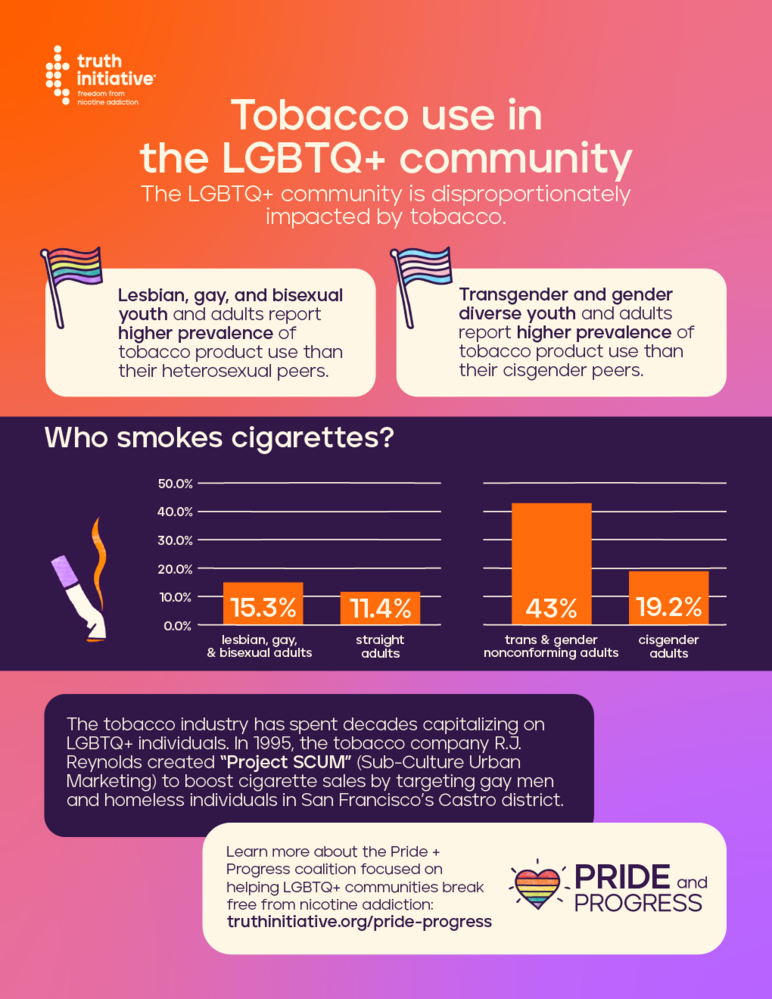
More in targeted communities
Want support quitting? Join EX Program
By clicking JOIN, you agree to the Terms, Text Message Terms and Privacy Policy.
Msg&Data rates may apply; msgs are automated.
